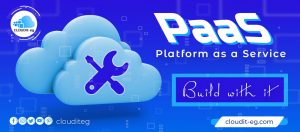Still unknown to most companies ten years ago, SaaS ( Software as a Service ) is today an integral part of the IT landscape, and more precisely of software, and its place is only growing for the benefit of on-premise software. The turnover of the software as a service sector increased by 10% between 2017 and 2018, continuing a decade of uninterrupted growth.
Let’s go back to the definition of software as a service: what is it? What are the advantages? How does it work? At the heart of SaaS challenges: digital transformation and business productivity.
1. What is SaaS?
It is a model for the provision of software and remote applications via the cloud. The software as a service requires no installation of software on your computer or on your servers: you simply go to the software via a web browser and an internet connection.
The opposite of SaaS, therefore, corresponds to the software to be installed on your computer: we are talking about on-premise software, literally “on-site”, therefore on the local servers of your company. Moreover, the term on-demand was previously used to talk about SaaS, as opposed to on-premise.
You may have also come across the term ASP ( application service provider ), or application service provider. Unlike ASP models, SaaS applications are developed natively for the web.
2. How does SaaS work?
The software as a service is to provide users with applications hosted on remote servers outside their premises. It is based on cloud computing: data is hosted in data centers (data centers) outside the company that uses it.
? SaaS and cloud computing are not synonymous: the cloud is a broader concept than SaaS, which particularly concerns the company’s IT infrastructure.
Concretely, to use the software as a service :
- the user chooses the relevant subscription from the SaaS tool he needs;
- he does not need to install anything locally on his computer or on his servers;
- it connects to the SaaS application via a web browser;
- it benefits from updates built right into the software without upgrading or paying anything.
Do you use several SaaS software and want them to communicate in order to intelligently use each other’s data? This is possible by means of an API ( Application Programming Interface ) by “connecting” the applications to each other.
For example: connect your payroll software to your accounting software to reuse payroll data in accounting, without re-entering. You thus avoid errors, duplicates, or omissions, and you ensure that the data has not been modified in accounting.
3. What is a SaaS solution?
A SaaS solution is quite simply an IT solution that relies on it: all data is hosted in the cloud.
- The SaaS solution is accessible from any device: computer, smartphone, tablet. The only constraint is to have access to the internet.
- This software package is therefore not only available on the premises of the company, but everywhere, including on the move.
4. The SaaS business model
The SaaS business model is also different from that of on-premises software. You do not buy a license, but you take out a subscription, usually monthly or annually, per-user or for a group of users, and sometimes without commitment.
The subscription price includes:
- the use of the online software,
- the accommodation on the servers of the software as a service,
- the updates and upgrades of the solution,
- the medium in some cases.
? Is SaaS cheaper than “classic” software? It depends on you to compare! In any case, with SaaS, the price displayed includes all these services and you don’t have any hidden costs.
5. Why choose SaaS? 4 advantages
To reduce costs
Compared to on-premise software installed on your computer, a monthly subscription costs less: you don’t have to add the cost of maintenance.
In addition, version upgrades are integrated directly into the tool in complete transparency for users: no update required, and therefore no cost there either.
? Subscription to software in SaaS mode thus represents a more economical solution that is accessible to the greatest number of companies.
To have software accessible everywhere, at any time
Have access to online software anywhere, whether you are in the office, on the road to a client, on a construction site, or on a train? This is one of the advantages of SaaS.
An internet connection is sufficient to access a SaaS application. You can work anywhere and on any type of medium: smartphone, computer, or tablet.
? You are not blocked in the progress of your projects if you do not have access to a tool installed on your computer. SaaS = freedom!
To evolve at your own pace
Is your team growing? Are your needs changing (functionalities, storage space, business needs, etc.)?
The SaaS subscription formula is flexible to allow you to react flexibly while following the speed of your growth.
? Adjust the number of users as you wish, opt for a more comprehensive subscription in terms of functionalities, go from a monthly subscription without commitment to a more advantageous annual subscription… There is a formula for each need!
To stay operational no matter what
A disaster on your premises? No matter: all your data is saved in the cloud!
From a security and business continuity perspective, you can rest assured that your team can continue to use the online service offered by the software. With other computers and an internet connection, the business remains operational.
Examples of SaaS applications
- To manage your customer relationship: a CRM in SaaS mode
- Salesforce Sales Cloud
- Simple CRM Enterprise
- To manage your business: an ERP in SaaS mode
- Ekkotime
- SAP Business One
- To manage your accounts and finances
- Sage 50cloud Sky
- Cegid’s Yourcegid Finance Y2
- To manage its human resources
- a HRIS like Lucca HRIS
- recruiting software like Taleez
- To manage your projects and tasks online
- monday.com
- z0 gravity
6.The future is in SaaS
It is impossible to deny the growing share of software as a service on the market, nor its role in the digitalization of companies. software as a service is not a “miracle” solution for companies, but it is clear that its advantages weigh heavily in the balance when it comes to equipping its teams with the best tools.




